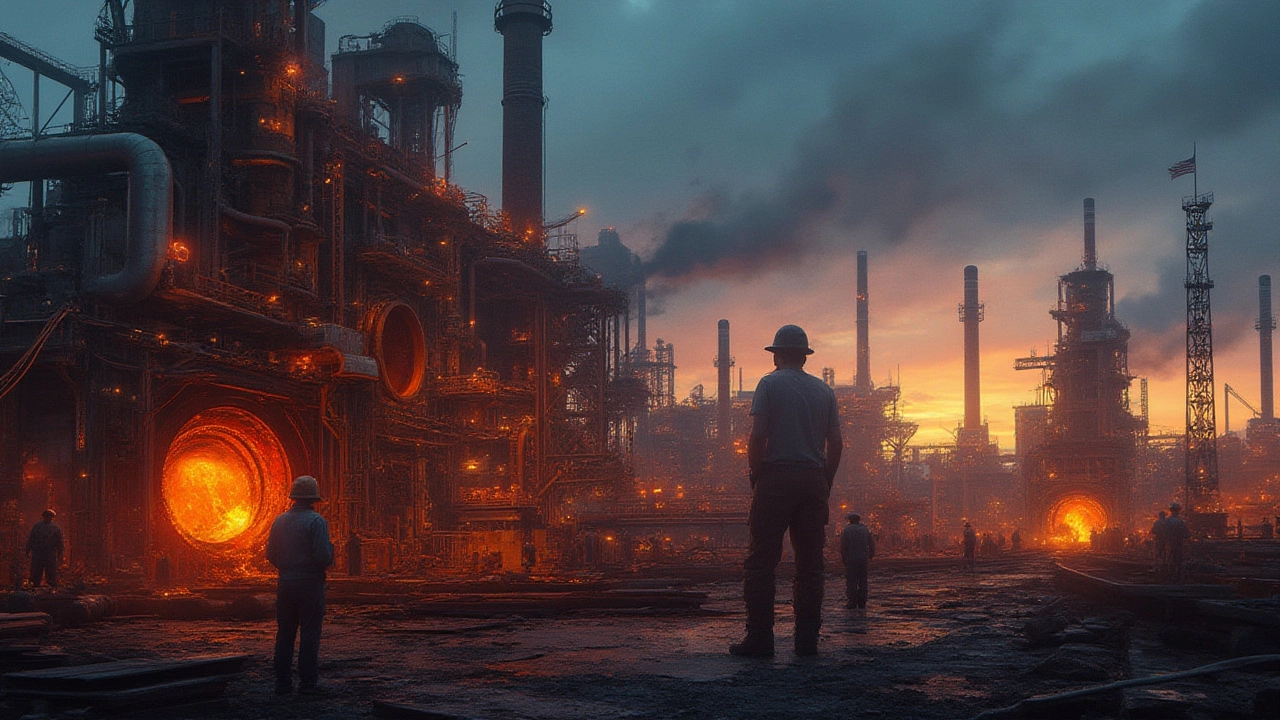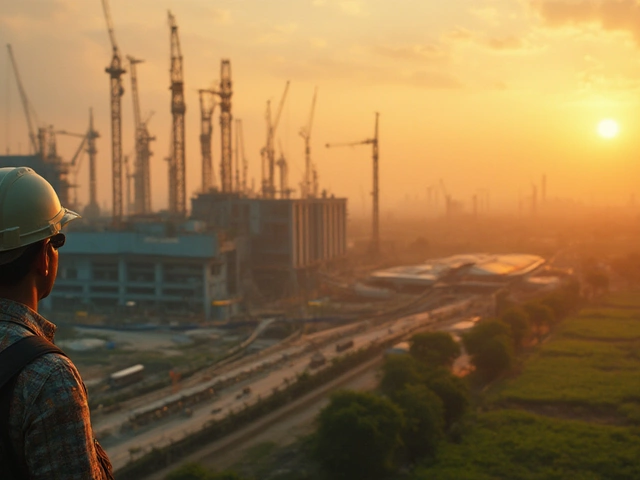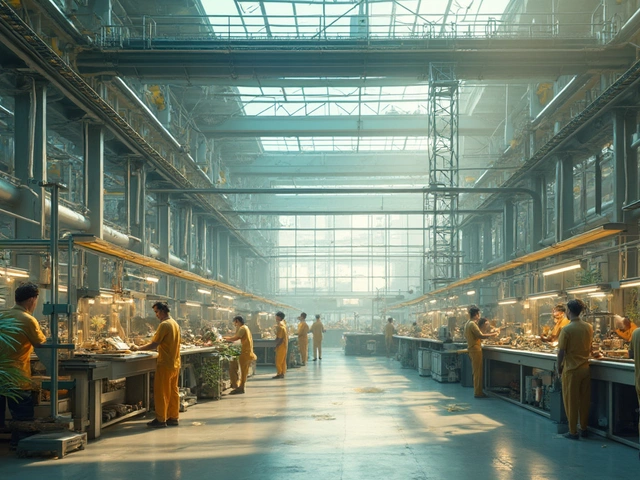You might be surprised to know how often your car, the streetlights outside your house, or even the kitchen sink have a secret American past—a chunk of U.S. steel might be hiding in plain sight. Ask anyone on the street whether there are any steel mills left in the US and you’ll likely get a shrug or a nostalgic tale about a granddad who used to work at a smoke-belching mill. But is that just old history, or is steel still rolling hot off presses right here at home?
The Pulse of Modern U.S. Steel Mills
First off, yes, there are still steel mills operating in the United States—and not just a handful eking out a living. While the epic era of giant integrated mills (think Cleveland, Pittsburgh, or Gary, Indiana) has passed its heyday, modern steelmaking hasn’t packed up and left. According to the American Iron and Steel Institute’s 2024 report, the US was the world’s fourth-largest steel producer, behind only China, India, and Japan, pouring out about 80 million metric tons of steel in the previous year.
Walk into a steel mill these days and it’s nothing like those black-and-white photos—workers bent over, orange sparks flying in a dungeon of smoke. Instead, you’ll see a surprising amount of automation. Many of the classic behemoth mills have shut down or drastically shrunk. Yet, in their place, dozens of so-called "mini-mills" have mushroomed up. These plants aren’t small by normal standards (some employ thousands), but instead of turning iron ore and coke into steel from scratch, they mostly recycle old steel. Scrap fed into huge electric arc furnaces is melted down and reborn as cars, appliances, and skyscrapers.
Nucor and Steel Dynamics, for example, operate major mini-mills in states like Arkansas, Alabama, and Indiana. These two companies alone were responsible for about 40% of domestic US steel production in 2023. Cleveland-Cliffs, which purchased Ak Steel and the US operations of ArcelorMittal, runs some of the largest integrated mills still left, like those in Ohio and Indiana. You’ll even find steel plants thriving in less traditional spots—places like Kentucky or South Carolina, where proximity to both power sources and major highway/rail hubs matters more than ancient geography.
Steel jobs aren’t what they used to be, though. In 1980, nearly 400,000 Americans worked in steel production—today, fewer than 90,000 do. Why? One employee at a modern mini-mill can produce 1,000 tons of steel a year, thanks to tech. Compare that to just 200 tons per worker in 1980. Pretty wild, right? And because steel is so heavy and expensive to ship, having domestic producers scattered through the country helps keep costs down for everyone from carmakers to the crew welding your next apartment block.
Here’s a quick look at some real numbers, pulled from the World Steel Association’s 2024 ranking:
| Company | Headquarters | Main Product | 2023 US Production (Million Tons) |
|---|---|---|---|
| Nucor | Charlotte, NC | Rebar, Plate, Sheet | 22.4 |
| Cleveland-Cliffs | Cleveland, OH | Flat-rolled, Stainless | 16.3 |
| Steel Dynamics | Fort Wayne, IN | Sheet, Rail, Pipe | 13.8 |
| Gerdau North America | Tampa, FL | Long products | 7.9 |
What’s the upshot? The US still rolls out millions of tons of steel a year. The jobs look different, and so do the plants, but the steel itself? Still made right here, and plenty of it travels the globe stamped "Made in the USA."
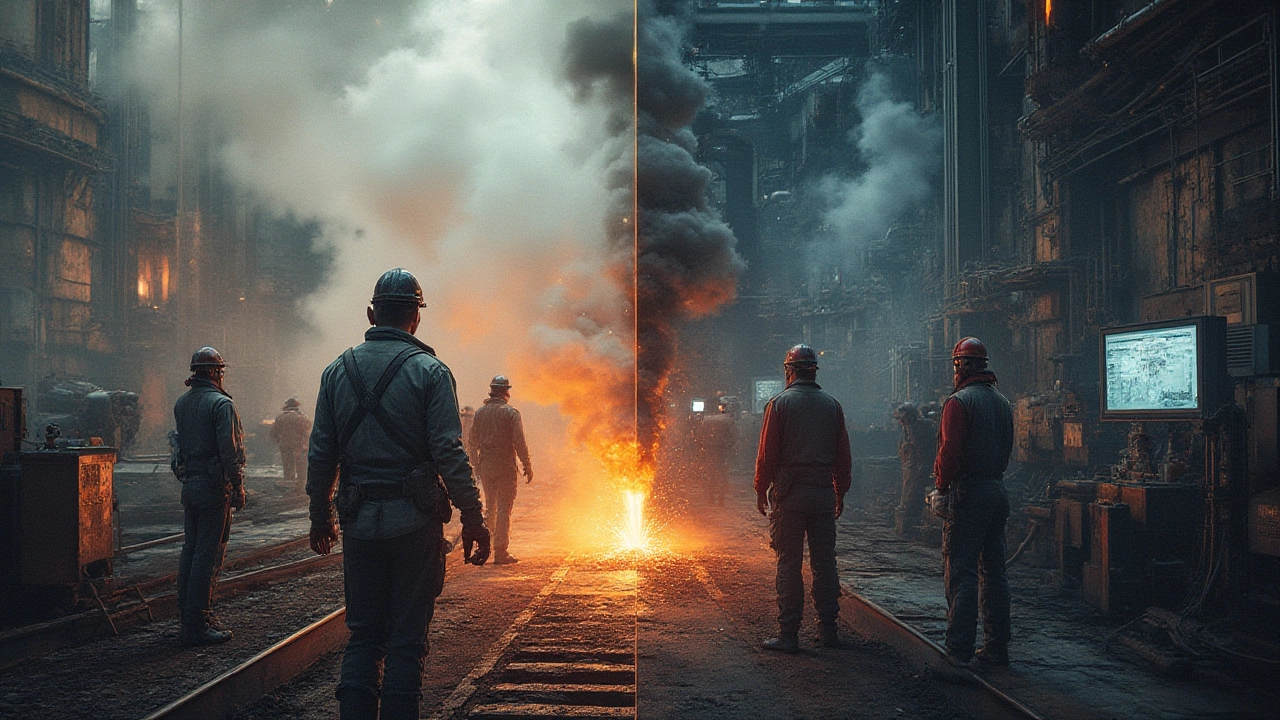
Why the Industry Changed: From Rust Belt to Tech Belt
So, what happened to those lumbering old mills that once made Pittsburgh glow at night? A perfect storm: foreign competition, cheap imports, new tech, and shifts in demand all slammed into each other. Imports especially shook the ground under old-school blast furnaces. In the late 1970s, US mills lost their global cost edge. Suddenly, steel from Japan, South Korea, or even Brazil could land in Chicago or Boston for less than local stuff—sometimes even after paying tariffs.
Then there’s the rise of recycling. The invention (and relentless refinement) of electric arc furnaces—industrial microwaves for scrap steel—was a true game changer. One stat that blows people’s minds is that more than 70% of all steel made in the US comes from recycled metal. To put that in perspective, if you tossed an old washing machine last year, there’s a decent chance it’s now part of Florida’s highway bridges. And this helps the environment, too—melting scrap needs less energy than churning fresh metal from ore.
As the industry evolved, steel towns like Bethlehem, Pennsylvania or Youngstown, Ohio, faced tough setbacks. Whole communities grew around huge mills. When the sirens at the end of shift blew no more, local economies took serious hits. It’s why the "Rust Belt" nickname stuck. Some towns lost up to half their residents in two generations. But other regions pivoted quickly. Places like Birmingham, Alabama and towns along the Mississippi turned to mini-mills and tech-focused manufacturing.
You can’t talk about steel without talking about big government moves. The US slapped tariffs on imported steel in 2018 and again in 2022. That helped local mills, at least in the short run—volume and profits ticked up. But prices spiked, too. Suddenly, companies using steel in construction, auto, and appliances had to pay more. Consumers sometimes felt it in higher prices for cars or stoves. But for local jobs and steelmakers, those years offered some breathing room.
- Tip: Wonder if you’re using American steel? Major infrastructure projects—especially in roads, railways, and bridges—often have "Buy American" clauses that require nearly all steel must be domestic.
- Interesting Fact: The U.S. Navy’s Ohio-class nuclear subs have hulls made from steel rolled in the Midwest, with formulas unique enough that some chemists need special clearance just to handle samples.
- Tip: If you’re in construction, check if your supplier is "AISC-certified"—that means steel passed tough American quality standards and didn’t just roll in on a container ship.
Some places even market themselves proudly for their steel roots. Gary, Indiana, for example—once home to the sprawling US Steel Gary Works—has been investing in retraining for mill workers to tackle high-tech factory jobs. The pride never left, just shifted course.
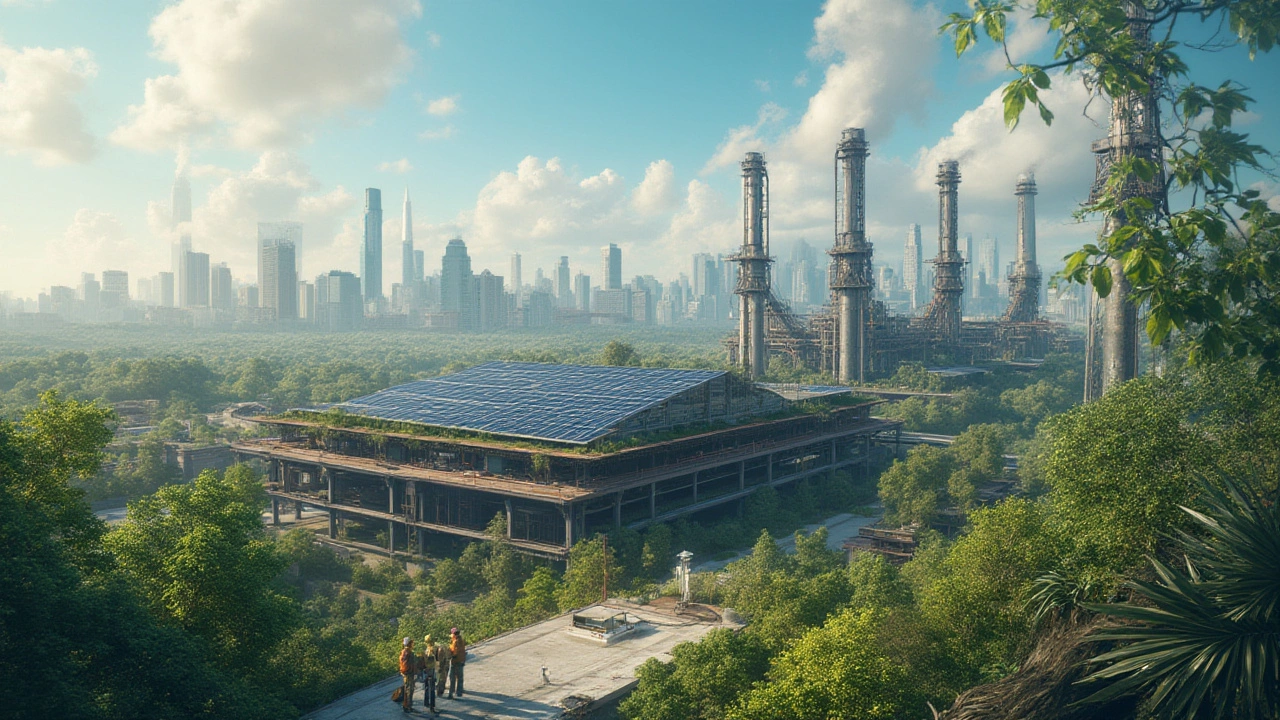
The Future of Steel Mills: Innovation, Automation, and Sustainability
It’s not all rust and nostalgia. American steelmakers are snapping up new tech, spending billions on smarter processes and cleaner operations. Nucor, for instance, recently broke ground on a $2.7 billion mill in West Virginia boasting next-generation electric arc furnaces. These plants use a fraction of the energy required by old blast furnace giants, and they put fewer emissions into the air. Some companies are experimenting with green hydrogen to replace coal altogether. If these projects scale, they could wipe out the industry’s carbon footprint over the next 20 years.
Automation is another wave. Today's control rooms look more like NASA than a shop floor. Robots handle some of the most dangerous, repetitive tasks—a big win for safety. Fewer accidents, fewer health risks. That’s one reason why, despite fewer jobs total, steelwork is about three times safer than it was in 1990.
What about jobs and local communities? The truth is complex. New mills aren’t labor sponges, but they pay way above average when they do hire—often $28 to $40 an hour for line operators. And they leave behind far less pollution. Modern mini-mills produce just a fraction of the harmful particulates that their grandparents produced. EPA air readings from towns like Sinton, Texas—a hot spot for modern steel—are cleaner than they’ve ever been.
If you’re thinking about chasing a steel job, look beyond the old stereotypes. The industry is hungry for people who know automation, maintenance, robotics, and even data analytics. Apprenticeships and trade schools in Kentucky, Pennsylvania, and Texas have seen a spike in applicants under 30. Some high schools even offer "Steel Tech" tracks alongside IT or mechanics.
Let’s talk numbers. There are almost 100 steelmaking facilities left in the U.S., with more than 50 classified as mini-mills. About 90% of new construction steel used in the west and Midwest is melted the modern way from scrap. The rest, mostly specialty steels needed for things like pipelines, rails, and aircraft, still comes from a handful of aging but well-kept integrated mills. Here’s a breakdown:
| Type | Number in US | Main Output |
|---|---|---|
| Mini-Mills (Electric Arc Furnace) | ~55 | Rebar, bars, sheet steel, beams |
| Integrated Mills (Blast Furnace) | ~7 | Flat-rolled, specialized steel |
Want a tip if you’re investing or just curious? Watch how these new "green steel" projects pan out in the next five years. The EU has started to demand low-carbon steel for imported cars and appliances. If the US industry takes the lead, American steel could actually get more competitive, not less. And with infrastructure getting a glow-up after the 2021 'Build America' funds, millions of new tons of steel mills US production are earmarked for bridges, schools, and transformers coast to coast.
Is steelmaking ever coming back to its 1950s monster size? Probably not. But sleek new plants, smarter staff, and local pride mean American steel isn’t a relic—it just reinvented itself for a different future. Next time you spot a new skyscraper or ride over a fresh bridge, there’s a solid chance it’s American steel beneath your feet, forged in a living, breathing mill just a few states away.
